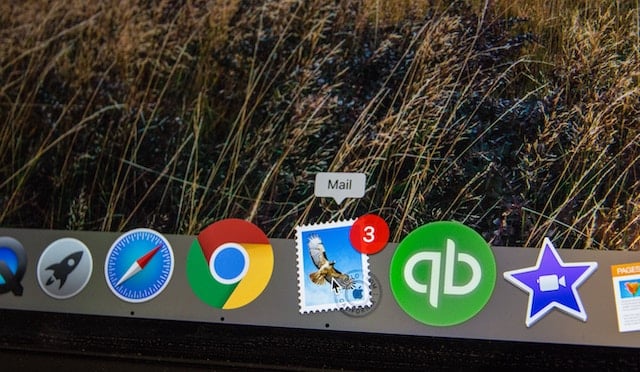When my boss told me we'd be switching platforms and moving to HubSpot, one word can describe my initial reaction - terrified. I’d spent years building up a reputation as a top-notch blogger but I’d never used any blogging software apart from Wordpress. As much as I liked Wordpress as a platform, I knew I had to get to grips with using HubSpot.

As it turns out, my fears were totally unfounded. Not only have we successfully moved our WorkflowMax blog onto HubSpot, but our site has grown from strength to strength, and I’ve learned more about blogging in the last six months on this platform than in my six blogging years preceding it.
As a copywriter, I don’t deal with the down ‘n’ dirty of our inbound campaigns. I’m in charge of writing the content and keeping our blog and social media channels ticking over.
This is how I use HubSpot as a writer and content creator. Let’s get into the nitty gritty of how we manage our content production at WorkflowMax.
Keeping an Editorial Calendar
All good blogs begin with a schedule. At WorkflowMax, we try to post 5 days a week. This includes helpful advice for small businesses, fun articles about the cloud, advice to help clients manage their projects using our software, and anything else that takes our fancy.
Monica, our other copywriter, and I plan our posts a month in advance. We each write two posts per week (Monica does Mondays and Thursdays, and I tackle Tuesdays and Wednesdays). On Friday, we run posts written by freelancers or guest bloggers. Monica and I brainstorm our own topics with guidance from the strategic vision for the blog (which, like many things in marketing, changes like the tide).
We used to use Trello to manage our content calendar, but it had many limitations. Ever since HubSpot rolled out the new Calendar function, we’ve been using that to manage the blog content.
How do we use the Calendar tool?
- We turn off all filters except for blog posts, and add each post topic as a task.
- Notifications sent to our email addresses remind us to update our posts with the actual content.
- As we complete the posts, we can schedule them to publish and check them off the calendar as completed.
Every week, we get together on a Monday and look at the topics we’ve plotted so far. Because we’re often working on different projects that might require blog posts, we might swap some things around or tweak topics to fit in with what needs doing that month.
This editorial calendar has been vital to our ability to manage a busy blog. With an editorial calendar, you can look at your blog for the next month and instantly see gaps you need to fill. Because we write across several different verticals and subject matter, and at any one time we might be promoting multiple projects or downloads, we can spread these out over the month so our readers aren’t bombarded with five agency-related posts one week, and no architecture-related stuff for three months.
Writing and Publishing Posts
Since WorkflowMax and Xero are cloud-based services, our company decided to walk our talk and switch entirely to cloud-based systems. We use Google tools for our word processing needs.
I create my blog posts in Google Drive. I write quick drafts of around 500-800 words, save the drafts, let them percolate for a day or two, then go back and make them pretty. Most of our blog articles end up between 1000-2000 words. We like to provide useful, informative content (and if we can make you laugh, well so much the better!)
I then send my blog posts on to Monica to edit. She might leave a couple of notes, or give me the thumbs up to publish. Sometimes our notes are just, “This is awesome!” which is nice. I check her posts, too.
When a post is good to go, I’ll upload it to the associated task in HubSpot, and do all the additional tasks that get it ready to go.
As a writer, I am a bit scatterbrained, and even though I’ve been blogging since 2008, I sometimes forget to do little things like edit the meta description or add the “read more” separator. Sometimes, after publishing a post, we would discover <p> tags had been left off, creating random formatting within the post. For this reason, we created a “blogging checklist” for each post we publish - a list of everything we need to do and check before a post goes live. We check over each post once while it’s in editing, then preview it on the blog and check it again. After working with the list for a while, it’s pretty much ingrained in my head, so I don’t need to actually have the list in front of me anymore.
Social Media and Blogging
So how do people find our blog posts? Well, one of our more popular blog traffic channels is Twitter. We have around 4500 followers, and that number is growing steadily every day. We used to use a separate app to manage social media, but when we moved on to HubSpot we started managing social updates there, too. It’s nice not to have to swap between different apps!
We post to Twitter approximately 10 times a day. Around 60% of our posts are links to new or old blog content, or other WorkflowMax pages, like our books. We also post quotes on success, business, creativity, and inspiration, and regularly link to other articles our readers would be interested in.
Every time we publish a new blog post, we set up Twitter updates for up to a year in the future, so we’ve always got a cache of previously-scheduled posts going out each day. Monica and I could both go on holiday and we’d still have tweets going out every day.
Using the “Monitoring” function, we’ve created a list of influencers and regularly retweet their posts and answer their questions. I also clear the social media inbox every morning, replying to any tweets that have come in. One of my favorite features of the inbox is that it will tell me the relationship the Twitter account has with us - eg. if they are a contact or a marketing qualified lead or a customer.
Creating Campaigns for Blog Posts
We’ve created different campaigns for each industry vertical (Agencies, Architects, Engineers, etc), as well as for specialized campaigns, such as content we created for a guest webinar. Every blog post, social media update, and EDM going out can be tagged with a campaign. We can then track the results of different campaigns.
Because we write across many different verticals, we’ve created campaigns for all the different verticals. We can then tag content as part of these vertical campaigns, and see how that content performs on an ongoing basis. These stats inform our blog content going forward.
For example: I can see that our agency blog posts receive more hits, and more CTA clickthroughs than our IT or engineering blog posts. So we focus more on writing agency posts, since that vertical clearly enjoy interacting via the blog.
For me as a copywriter, HubSpot has proven to be an excellent tool. I enjoy being able to run all my different tasks from the same platform, and to instantly be able to swap out my “publishing” hat for my “analytics” hat and see how my content is performing. I look forward to digging deeper and learning more about what this platform can do.
What does your content marketing machine look like? Whether you're a team of one who wears many hats or have your own content team, we'd love to have you share your thoughts and tips in the comments below.






![Plannuh Builds Product With the Customer at the Forefront [Customer Story]](https://53.fs1.hubspotusercontent-na1.net/hubfs/53/IMG_0128-3.jpg)
![How One HubSpot Customer Uses Pop-Up Forms and Workflows to More Intelligently Help Customers [Customer Story]](https://53.fs1.hubspotusercontent-na1.net/hubfs/53/inbound-lorax-ff7a59-light.jpg)


![How TurboTenant Makes Property Management Easy With HubSpot [Customer Story]](https://53.fs1.hubspotusercontent-na1.net/hubfs/53/unique-balcony-architecture.jpg)